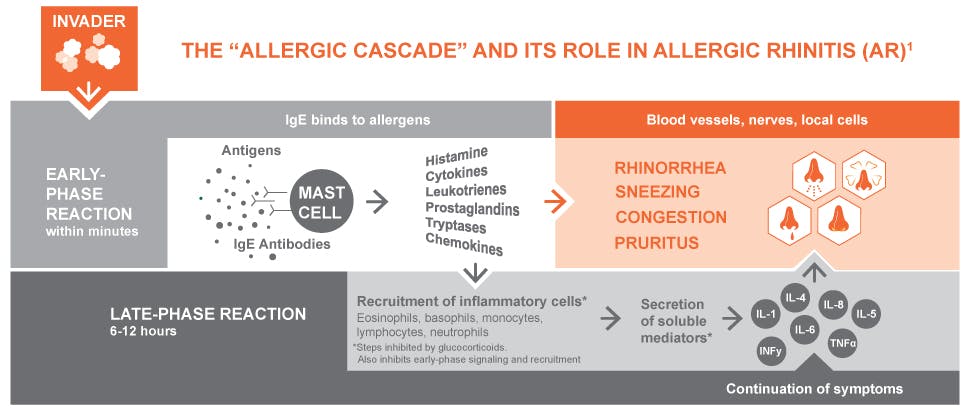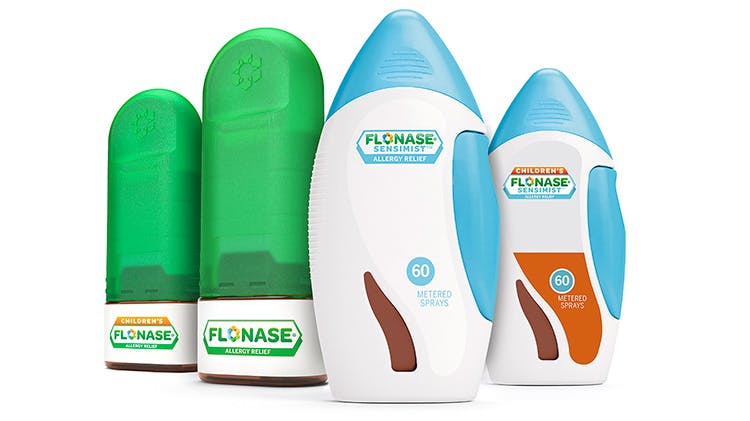Allergic Rhinitis Causes & Mechanisms

Allergic cascade—what happens when an allergen infiltrates the body?

The “allergic cascade” and its role in allergic rhinitis (AR)1
The body’s immune response to allergens includes a series of early- and late-phase reactions—the allergic cascade. There are several allergic mediators involved in this cascade, not just histamines.2
Typically, the allergic cascade follows this pattern2,3:
- Sensitization to an allergen
- Early-phase response upon re-exposure to an allergen
- Late-phase response
When the body is exposed to an allergen:
- Sensitization involves being exposed to an allergen for the first time2
- The body produces immunoglobulin E (IgE) designed specifically for that particular allergen, but an allergic reaction does not yet occur2
- Re-exposure to an allergen triggers an early-phase response that occurs within minutes to an hour2
- The IgE of mast cells binds to the allergen, crosslinking the IgE2
- When enough crosslinking occurs, the mast cells explode with histamine and other inflammatory substances, called mediators, such as cytokines, leukotrienes, prostaglandins, eosinophils, and thromboxanes2,3
- The late-phase response occurs from 3 to 10 hours after allergen re-exposure2
- Immune cells, such as eosinophils, secrete substances that increase inflammation and bring other immune cells into the reaction, perpetuating the inflammatory response2
- Symptoms can be more severe than those in the early phase2
The end result is the allergic response consisting of a range of symptoms such as rhinorrhea (runny nose), sneezing, congestion, and pruritus (itching)2





